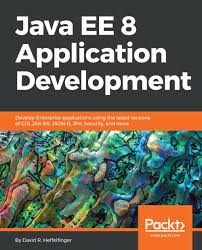Java 8, released in 2014, marked a significant milestone in the evolution of the Java programming language. It introduced several groundbreaking features that revolutionized Java development, enhancing developer productivity, code readability, and performance. This white paper provides a comprehensive overview of key Java 8 features and their impact on application development.
Java 8 Application Development: A Comprehensive White Paper
1. Introduction
Java 8, released in 2014, marked a significant milestone in the evolution of the Java programming language. It introduced several groundbreaking features that revolutionized Java development, enhancing developer productivity, code readability, and performance. This white paper provides a comprehensive overview of key Java 8 features and their impact on application development.
2. Core Features
- Lambda Expressions:
- Concept: Concise, anonymous functions that can be treated as values. They enable functional programming paradigms in Java.
- Benefits:
- Improved code readability and conciseness, especially for event handling and collection processing.
- Reduced boilerplate code, leading to increased developer productivity.
- Enhanced flexibility and expressiveness.
- Example:List<String> names = Arrays.asList("Alice", "Bob", "Charlie"); names.forEach(name -> System.out.println(name));
- Java
- Streams API:
- Concept: Provides a declarative way to process collections of data in a functional style.
- Benefits:
- Enhanced data processing capabilities with methods for filtering, mapping, reducing, and sorting.
- Improved performance through parallel processing capabilities.
- More concise and readable code for data manipulation.
- Example:List<Integer> numbers = Arrays.asList(1, 2, 3, 4, 5); int sum = numbers.stream() .filter(n -> n % 2 == 0) .map(n -> n * n) .reduce(0, Integer::sum);
- Java
- Default and Static Methods in Interfaces:
- Concept: Allows interfaces to contain default and static methods, providing flexibility and reusability.
- Benefits:
- Enables the evolution of existing interfaces without breaking existing implementations.
- Promotes code reusability and reduces boilerplate code.
- Example:interface MyInterface { void method1(); default void method2() { System.out.println("Default method"); } static void method3() { System.out.println("Static method"); } }
- Java
- Optional Class:
- Concept: A container object that may or may not hold a non-null value.
- Benefits:
- Helps to avoid NullPointerExceptions by providing a safe way to handle potential null values.
- Improves code readability and maintainability.
- Example:Optional<String> name = Optional.ofNullable("John"); String result = name.orElse("Unknown");
- Java
- Date and Time API (java.time package):
- Concept: Provides a comprehensive set of classes for working with dates, times, and time zones.
- Benefits:
- Addresses the limitations of the legacy java.util.Date and Calendar classes.
- Offers a more intuitive and object-oriented API for date and time manipulation.
- Example:LocalDate today = LocalDate.now(); LocalTime now = LocalTime.now();
- Java
3. Impact on Application Development
- Increased Productivity: Lambda expressions and Streams API significantly reduce the amount of code required for common tasks, leading to increased developer productivity.
- Improved Code Readability: Functional programming style and concise syntax enhance code readability and maintainability.
- Enhanced Performance: Parallel processing capabilities of the Streams API can improve performance for data-intensive applications.
- Better Error Handling: The Optional class helps to prevent NullPointerExceptions, leading to more robust and reliable applications.
- Modernized Applications: Java 8 brings Java up-to-date with modern programming paradigms, enabling developers to build more sophisticated and efficient applications.
4. Conclusion
Java 8 introduced a set of powerful features that have revolutionized Java development. By embracing these features, developers can write more concise, readable, and maintainable code while improving application performance and productivity.
5. References
- Oracle Java Documentation: https://docs.oracle.com/javase/8/docs/
- Effective Java (3rd Edition) by Joshua Bloch: This book provides in-depth guidance on best practices for Java programming, including effective use of Java 8 features.
Disclaimer: This white paper provides a general overview of Java 8 features. For detailed information and specific use cases, refer to the official Java documentation and relevant resources.
This white paper provides a comprehensive overview of Java 8 application development, covering key features, their benefits, and their impact on application development. It also includes a concise reference list for further exploration.
